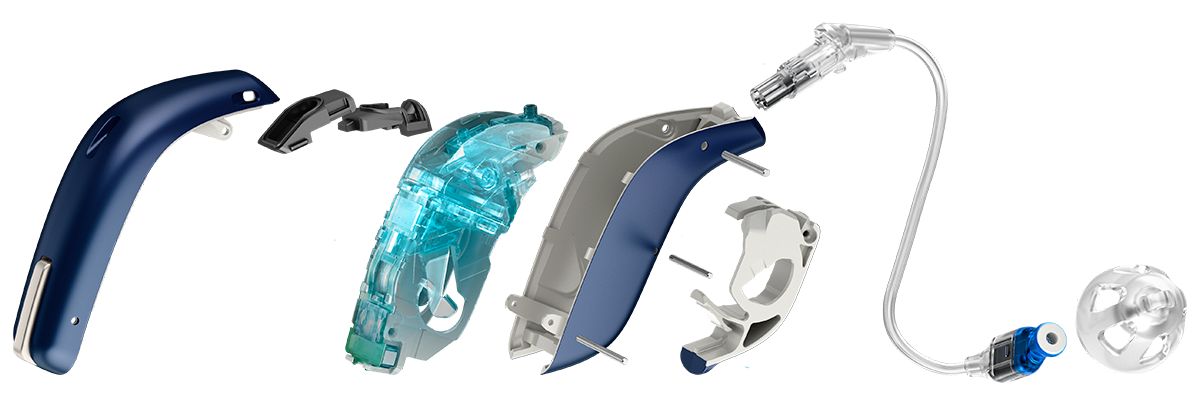
How Hearing Aids Work
Did you know that the earliest hearing aid devices were developed as early as the 13th century? Hundreds of years ago, those with hearing loss would use hollowed out horns of animals – cows and rams, primarily – to collect and funnel sound into their ear canals
In the 18th century, the ear trumpet – it looks exactly the way you imagine – was invented and commercialised. Luckily, we have come a long way since using sheet metal, trumpet-shaped devices to enhance our hearing.
Today, hearing aids are small and unobtrusive, yet they contain some of the most sophisticated technology. This technology helps empower people to live life to the very fullest, which is our fundamental mission here at HAB Hearing.
If you wear them, you might begin to wonder how modern, digital hearing aids are able to not only enhance sound, but also improve life. In short: How do they work?
A look inside the hearing aid
All hearing aids have five basic components: microphones, an amplifier, a loudspeaker, a battery and a computer chip.
The microphones pick up the sounds around you. These sounds are analysed by the computer chip, which processes sounds and sends them to the amplifier.
The amplifier increases the volume and sends these sounds to the loudspeaker, which in turns transmits sounds into the inner ear. This happens via tubing in an ear mould in the ear canal or through a thin wire to a speaker in the ear.
When the sounds eventually reach your inner ear, your ear converts the sound waves into electrical impulses. Those impulses are sent to the brain, which processes them. That’s how hearing aids help the brain make meaning of sound.

Hearing aids that fit your needs
The digital hearing aids used today analyse incoming sounds intelligently, and selectively filter and boost relevant sounds. This is based on the programming of the hearing aids – different types of hearing loss require different programming. Your hearing care professional will program the hearing aids correctly for you, based on your type of hearing loss.
For example, some may struggle hearing low-pitch sound while others have a hard time hearing high pitches. Hearing aids therefore carefully amplify certain sounds so that they enhance a person’s speech rather than, say, a loud drill in the background. Hearing aids are also able to subtly adapt to different environments – after all, having a conversation around the dinner table and visiting a concert hall are very different experiences. But the right hearing aids will help you make the most of both.
